Is Clone Wars Going to Continue
Star Wars: The Clone Wars may have been aired in non-chronological order, but now that the series has completed its run on Disney+, it's possible to sort everything out within the larger timeline of that galaxy far, far away. The dating system employed in the Star Wars universe revolves around the Battle of Yavin, the major conflict seen in A New Hope, the film that was, of course, released first; everything that happened prior to it is labeled as BBY (Before the Battle of Yavin), and everything subsequently, ABY (After the Battle of Yavin). And in order to understand Clone Wars' chronological order and timespan, one must first get (re)acquainted with when the prequel trilogy of movies occur: Star Wars: Episode I - The Phantom Menace is set in 32 BBY; Episode II: Attack of the Clones, 22 BBY; andEpisode III: Revenge of the Sith is in 19 BBY, which is also whenStar Wars: The Bad Batchbegins. Meanwhile,Obi-Wan Kenobiis set in 9 BBY – 10 years afterRevenge of the Sith – accounting for the old age ofObi-Wan Kenobi's clone trooper, whose sad cameo reveals what happened to some veterans after the Clone Wars.
The writers behind the Clone Wars were in a special position to flesh out yet-unknown events in the Star Wars timeline, and this is essentially the root of the confusion regarding Clone Wars' watch order. Seeing as how the military conflict that was the Clone Wars started in Attack of the Clones and ended in Revenge of the Sith, viewers already knew heading into the TV show's run (which started all the way back in 2008) that this was the three-year timeframe that it had to work within. What's proven to be so surprising since then, however, is discerning when, exactly, these years pass; because the series already starts with Anakin Skywalker being a Jedi Knight and Obi-Wan Kenobi being a Jedi Master – and, indeed, already sitting on the Jedi Council – it's hard to get a natural sense of the passing of time. (It doesn't help that the chronology was originally kept opaque because the creators behind the production didn't know how long The Clone Wars would be on the air; its original executive producer, George Lucas, had at one point talked about doing a whopping 300 episodes.)
Since Disney purchased Lucasfilm, took stewardship of everything Star Wars, and brought about the end of the franchise's very first television show (first by abruptly canceling it in 2013 and then, at long last, by releasing an abridged final season in 2020), the company's also been able to look back and retroactively assign a date to every last episode. The correct Clone Wars watch order was accomplished in the tome that isStar Wars: Galactic Maps, which was published in 2016 (just in time for Rogue One: A Star Wars Storyhitting theaters) and which contains breakdowns of not only every film and episode released up until that point but also certain key Star Wars novels and comic books. This, then, is when every installment of The Clone Wars takes place, in chronological order, leading up to – and, even, beyond – Revenge of the Sith.
22 BBY (Seasons 1, 2, and 3)

There is an undisclosed amount of time that transpires between Attack of the Clones and The Clone Wars, which probably amounts to a month or two – just enough time for Anakin and Obi-Wan to get both their Jedi promotions and their clone attaches (Captain Rex and Commander Cody, respectively) and to have already met Count Dooku's new would-be Sith "assassin," Asaj Ventress.
The Clone Wars starts, chronologically, with the episodes "Cat and Mouse" (episode number 216) and "Hidden Enemy" (116), and then progresses to the pilot movie, which was released theatrically. This story arc not only depicts the Battle of Christophsis, but it also introduces viewers – and Anakin Skywalker – to Padawan Learner Ahsoka Tano. There are 16 more episodes that take place in the year 22 BBY, covering such events as the Galactic Republic convincing Toydaria to side with it over the Confederacy of Independent Systems, General Grevious's deployment of an experimental warship that's equipped with ion canons (technology that would become standard issue by the time of The Empire Strikes Back), and the capture of Dooku, Kenobi, and Skywalker by that charmingly unscrupulous pirate, Hondo Ohnaka. (Audiences also see Jar Jar Binks get mistaken by Separatist forces as a Jedi Knight in one of the worst-rated episodes of the entire series.)
The final installment set in the same year that Attack of the Clones occurs is "Trespass" (115), a standalone chapter that tells an isolated story from the titular Clone Wars but which is nonetheless thematically related: the Jedi have to help mediate a brewing war between the Pantorans and the newly discovered "primitive" tribe of the Talz.
21 BBY (Seasons 1, 2, and 3)
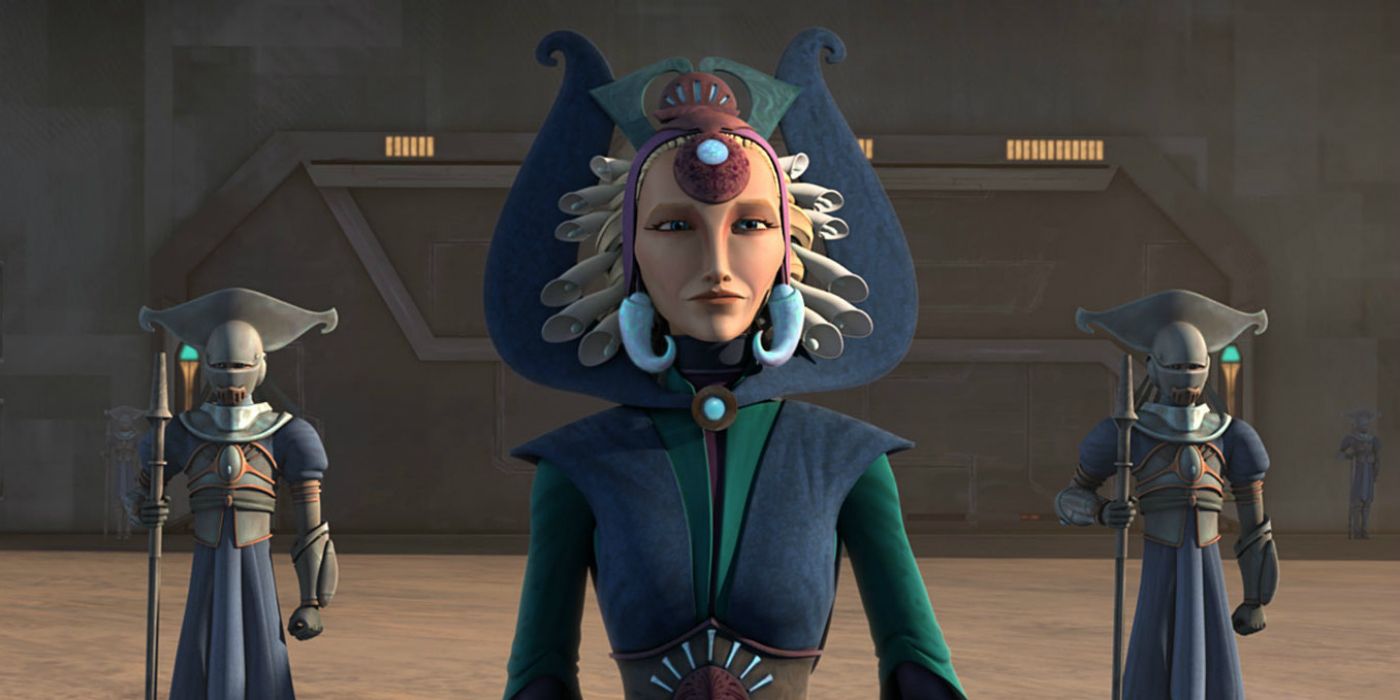
The first full calendar year of the Clone Wars finishes up the back half of the first season, covers the remainder of the second (eventually), and then ends roughly halfway through the third (again, remember that the episodes during these seasons are all scrambled up, chronologically speaking). In terms of plot, that means 21 BBY starts with "Blue Shadow Virus" (117), wherein a Confederate-backed scientist secretly attempts to weaponize a long-thought-extinct plague on the peaceful planet of Naboo, before going on to encompass the liberation of Ryloth, the reawakening of the massive Zillo Beast on Malastare, the second Battle of Geonosis, and the reappearance of the still-young Boba Fett, who is now under the tutelage of Aura Sing and seeking his revenge against Jedi Master Mace Windu.
But what is the biggest and most consequential storyline of this 12-month period – as evidenced by theClone Wars series finale – is the introduction of Mandalore into galactic proceedings for the first time since it and the Republic were at war, over a millennium before. In this first three-part narrative, audiences get to meet Duchess Satine Kryze, the former would-be flame of Obi-Wan Kenobi, and the splinter terrorist group of the Death Watch, which has secretly allied with the Separatists and wishes to overthrow Satine and her government. (It is the former element that will propel viewers all the way to the last chapters of The Clone Wars.) 21 BBY ends with "Senate Murders" (215), the episode that sees Senators Padme Amidala and Bail Organa investigating a string of, well, murders within the Congress of the Galactic Republic.
20 BBY (Seasons 3, 4, and 5)
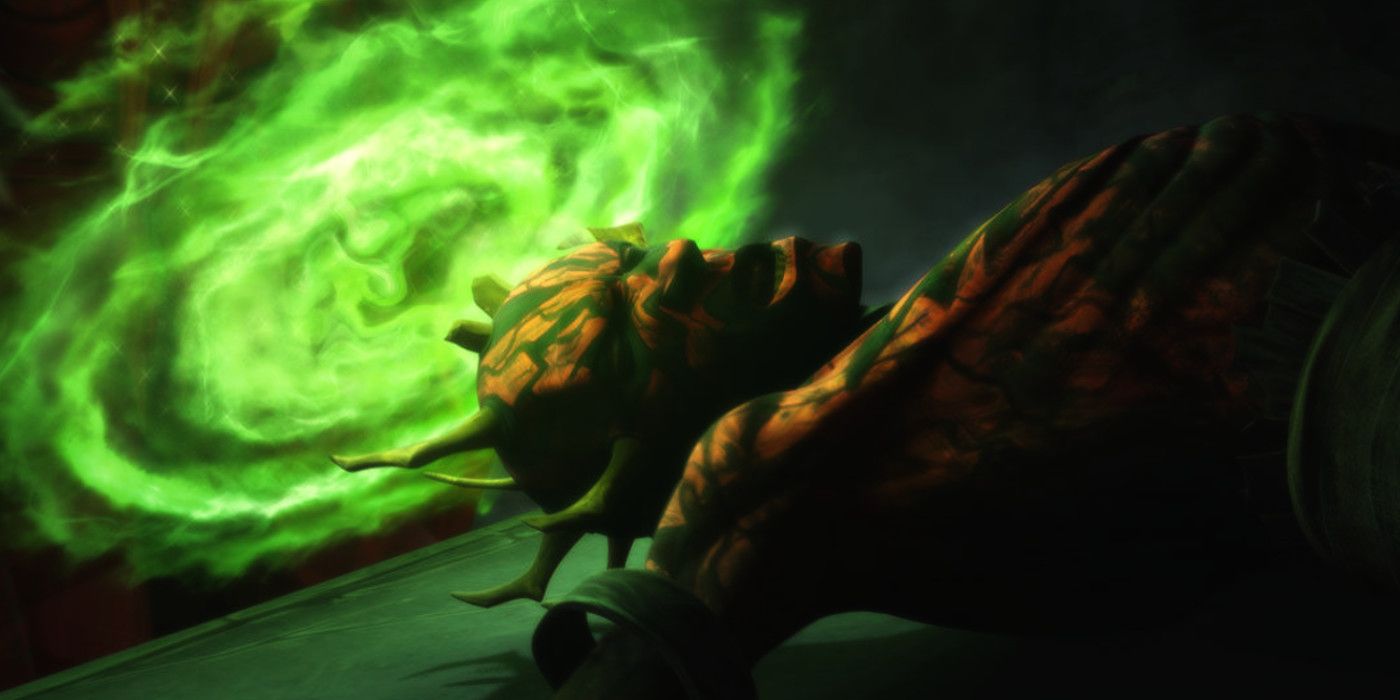
20 BBY starts with the biggest bang yet: Darth Tyranus's attempted murder of his protégé, Asajj Ventress, and the subsequent retaliation by Ventress and her newly reacquainted Nightsisters. It's a storyline that formally introduces the Force cabal into the Star Wars mythos, and it also ends in the dramatic revelation that Darth Maul is still alive, somewhere out there in the galaxy.
The year would go on to deliver the fate of the Chosen One (Anakin Skywalker would need to reside on Mortis, apparently the font of the Force itself – a destiny he roundly rejects), see a Jedi-led assault on the impenetrable fortress of the Citadel (wherein Master Skywalker and Captain Wilhuff Tarkin meet for the very first time), give viewers their first chronological introduction to both Chewbacca (when he and Ahsoka are abducted by Trandoshan hunters) and Captain Gial Ackbar (who fights with the Republic to stave off a Confederate-backed attempt to start a civil war), reveal the first Separatist plot to kidnap Supreme Chancellor Sheev Palpatine (which is defeated by a disguised Obi-Wan Kenobi), show how the fallen Maul is brought back to mental and physical shape by his brother, Savage Opress, and his mother, Talzin, and provide a detour to Onderon, where Anakin teaches a scrappy, underdog rebel by the name of Saw Gerrera how to fight an insurgent war.
Ultimately, 45 episodes of The Clone Wars would take place in 20 BBY: "Nightsisters" (312) to "Point of No Return" (513). It is the biggest tally yet – but not so momentous as the next (and final) year.
19 BBY (Seasons 5, 6, and 7)
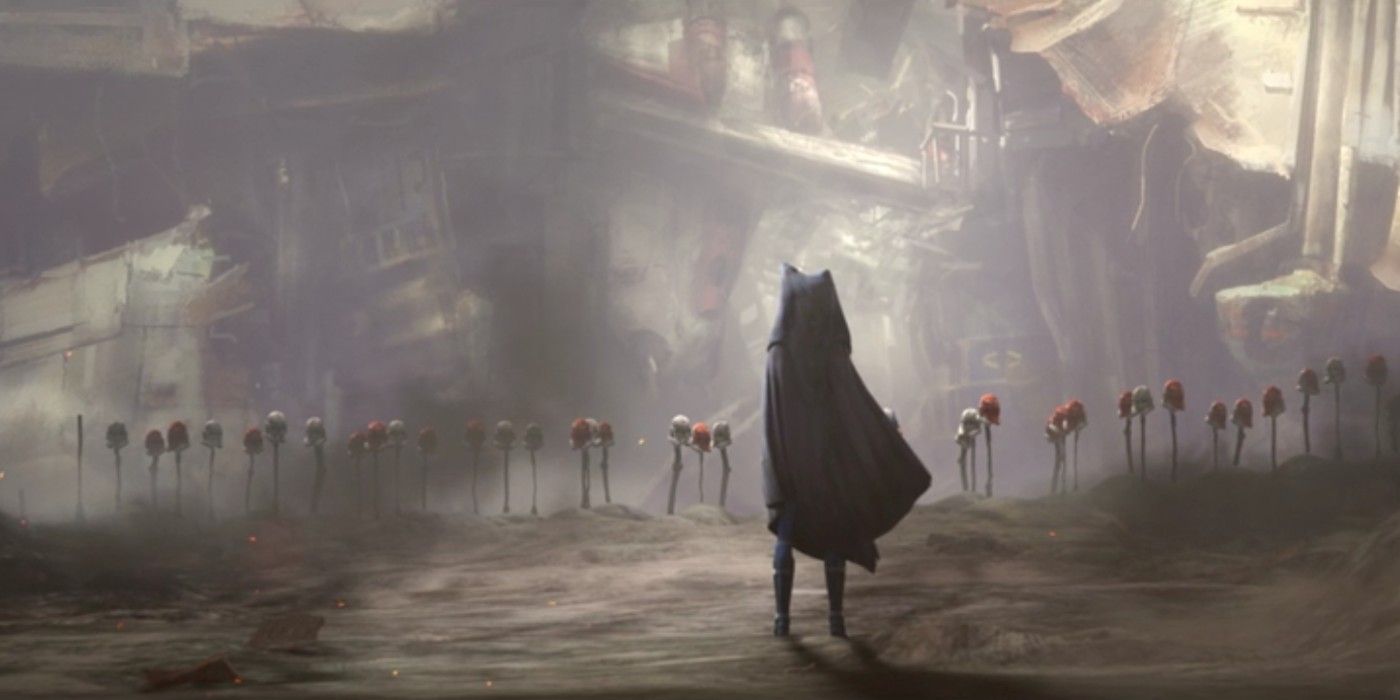
The year that ultimately includes Revenge of the Sith sees a split with the Clone Wars seasons that surround it: the vast majority of the story arcs during this particular period of time take place before the final of the prequel movies, but the last three episodes occur both simultaneously to and after the film. It's a move that better contextualizes Revenge of the Sith and also allows for some closure.
There are 30 Clone Wars installments that start off 19 BBY and build inexorably to Revenge of the Sith, spanning "Revival" (501) to "Old Friends Not Forgotten" (709). This begins with Darth Maul's decision to formally take on an apprentice (his brother, Savage) and, thus, replace the current Sith duo, Darths Sidious and Tyranus, and inherit their plans of empire. He assembles the Shadow Collective, that has its nexus on Mandalore – until he's defeated by Lord Sidious, that is, and imprisoned in a secret Separatist prison (with Savage left dead).
Later, the Padawan Ahsoka Tano leaves the Jedi Order behind; at least one clone trooper, Fives, discovers the hidden presence of inhibitor chips in the clones' brains, which have already been programmed with Protocol 66; and the Jedi Council realizes, three years too late, that the true identity of the mysterious man named Tyranus is really Count Dooku, and that he and his Sith master have been plotting the entire Clone Wars from the very beginning. This revelation eventually leads Yoda to a far deeper, more consequential understanding, one that will ensure the ultimate preservation of the Order throughout the entire Star Wars saga: how to retain his consciousness after dying, a lesson partially instructed to him via the spiritual remnants of Qui-Gon Jinn.
Related: Obi-Wan Kenobi Episode 2 Easter Eggs & Star Wars References Explained
In the last three episodes of Star Wars: The Clone Wars season 7– "The Phantom Apprentice" (710), "Shattered" (711), and "Victory and Death" (712) – viewers get the chance to see the events of Revenge of the Sith from Ahsoka's perspective, as she helps lead the liberation of Mandalore from Darth Maul's tyrannical grasp. By the end, both of the former apprentices manage to escape the death of the Old Republic and the birth of the Galactic Republic to fight another day.
19 BBY to 18 BBY (Star Wars: The Bad Batch Season 1)
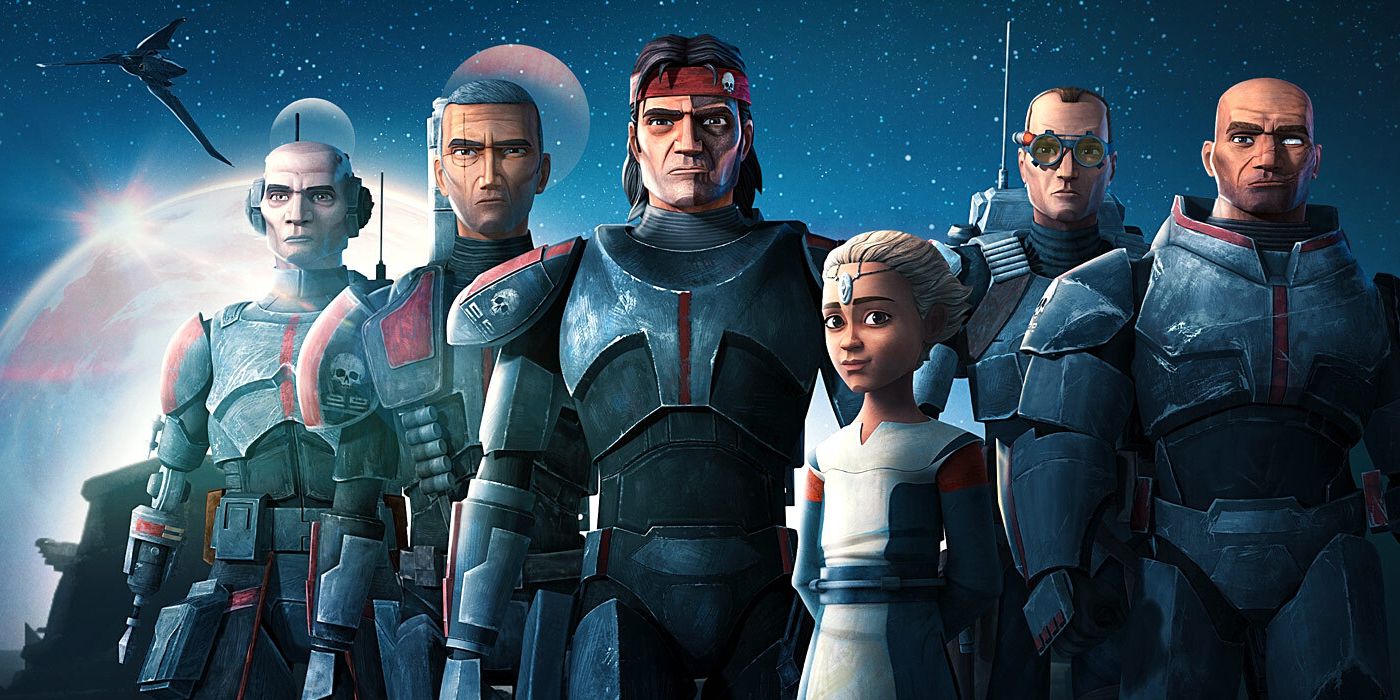
Star Wars: The Bad Batch is considered to be the thematic successor toThe Clone Wars, and it begins with Clone Force 99 - a Republic commando squad of mutant clones - not following Order 66 because their inhibitor chips malfunction. Taking place over the course of a year,The Bad Batchends with the Empire destroying the planet of Kamino - along with its main cloning facilities - in a failed effort to exterminate Clone Force 99. Notably, this group of rebellious clones is also the reason for why some ofObi-Wan Kenobi's Jedi survivors were able to flee the Empire.The Bad Batchis technically the last part ofThe Clone Wars, though the story continues inStar Wars: The Bad Batchseason 2.
9 BBY: How Does Clone Wars Link To Obi-Wan Kenobi?
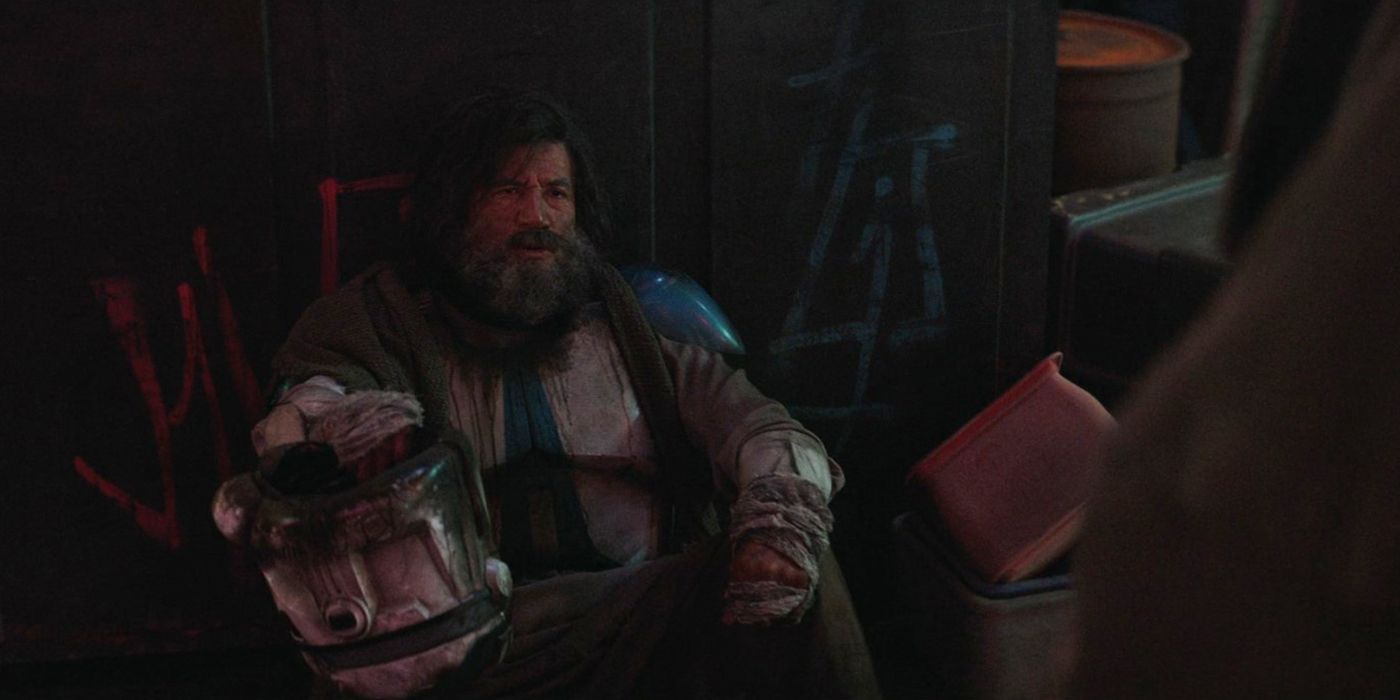
Star Wars: The Clone Warsends duringThe Bad Batch, butObi-Wan Kenobi, which is set a full decade after Order 66, tackles an often-neglected factor in the war that won the Empire the galaxy – the tragic fates of discarded clone troopers. While on a mission to find Leia and return her to her parents, Obi-Wan in 9 BBY encounters a Clone Wars veteran begging in the streets, still wearing the iconic blue uniform that identifies him as a former lieutenant in the Clone Army. What's truly notable about this surprise cameo addition to theObi-Wan Kenobicast is how it serves as a disturbing reminder of the neglected state of war veterans in the real world, many of which have also been abandoned and forgotten by their respective Empires, to whom these veterans gave their very lives. In short,Obi-Wan Kenobireminds viewers that even though the Empire won, it never bothered to ensure that the clones who secured its victory would be taken care of – consistent with how the Empire sees all clones as nothing more than expendable foot soldiers.
Want more Obi-Wan Kenobi articles? Check out our essential content below...
- Obi-Wan Kenobi Cast Guide: Every New & Returning Star Wars Character
- Obi-Wan Kenobi Episode 4 Easter Eggs & Star Wars References Explained
- Obi-Wan Kenobi Episode 3 Ending & Final Fight Explained
- Obi-Wan Kenobi Episode 2's Veteran Cameo Explained
- Who Voices Darth Vader In Obi-Wan Kenobi
- Why Obi-Wan Kenobi Is So Weak In His Star Wars Show
- Did THAT Obi-Wan Kenobi Character Really Just Die?
- Every Jedi Alive During Obi-Wan Kenobi's Timeline
- How Many Episodes Are In Obi-Wan Kenobi (& When Is The Finale)?
Source: https://screenrant.com/clone-wars-timeline-seasons-events-when-explained/
Post a Comment for "Is Clone Wars Going to Continue"